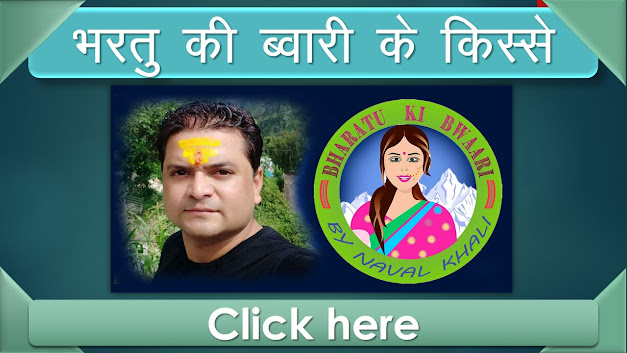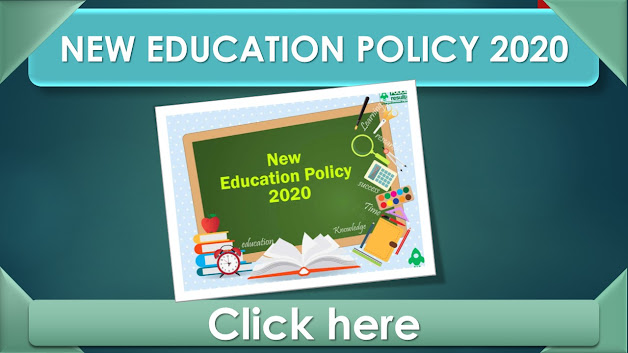11. Towards a More Holistic and Multidisciplinary Education
11.1. India has a long tradition of holistic and multidisciplinary learning, from universities such as Takshashila and Nalanda, to the extensive literatures of India combining subjects across fields. Ancient Indian literary works such as Banabhatta’s Kadambari described a good education as knowledge of the 64 Kalaas or arts; and among these 64 ‘arts’ were not only subjects, such as singing and painting, but also ‘scientific ’fields, such as chemistry and mathematics, ‘vocational ’
fields such as carpentry and clothes-making, ‘professional ’fields, such as medicine and engineering, as well as ‘soft skills’ such as communication, discussion, and debate. The very idea that all branches of creative human endeavour, including mathematics, science, vocational subjects, professional subjects, and soft skills should be considered ‘arts’, has distinctly Indian origins. This notion of a ‘knowledge of many arts’ or what in modern times is often called the ‘liberal arts’ (i.e., a liberal notion of the arts) must be brought back to Indian education, as it is exactly the kind of education that will be required for the 21st century.
11.2. Assessments of educational approaches in undergraduate education that integrate the humanities and arts with Science, Technology, Engineering and Mathematics (STEM) have consistently showed positive learning outcomes, including increased creativity and innovation, critical thinking and higher-order thinking capacities, problem-solving abilities, teamwork, communication skills, more in-depth learning and mastery of curricula across fields, increases in social and moral awareness, etc., besides general engagement and enjoyment of learning. Research is also improved and enhanced through a holistic and multidisciplinary education approach.
11.3. A holistic and multidisciplinary education would aim to develop all capacities of human beings -intellectual, aesthetic, social, physical, emotional, and moral in an integrated manner. Such an education will help develop well-rounded individuals that possess critical 21st century capacities in fields across the arts, humanities, languages, sciences, social sciences, and professional, technical, and vocational fields; an ethic of social engagement; soft skills, such as communication, discussion and debate; and rigorous specialization in a chosen field or fields. Such a holistic education shall be, in the long term, the approach of all undergraduate programmes, including those in professional, technical, and vocational disciplines.
11.4. A holistic and multidisciplinary education, as described so beautifully in India ’s past, is indeed what is needed for the education of India to lead the country into the 21st century and the fourth industrial revolution. Even engineering institutions, such as IITs, will move towards more holistic and multidisciplinary education with more arts and humanities. Students of arts and humanities will aim to learn more science and all will make an effort to incorporate more vocational subjects and soft skills.
11.5. Imaginative and flexible curricular structures will enable creative combinations of disciplines for study, and would offer multiple entry and exit points, thus, removing currently prevalent rigid boundaries and creating new possibilities for life-long learning. Graduate-level, master’s and doctoral education in large multidisciplinary universities, while providing rigorous research-based specialization, would also provide opportunities for multidisciplinary work, including in academia, government, and industry.
11.6. Large multidisciplinary universities and colleges will facilitate the move towards high-quality holistic and multidisciplinary education. Flexibility in curriculum and novel and engaging course options will be on offer to students, in addition to rigorous specialization in a subject or subjects. This will be encouraged by increased faculty and institutional autonomy in setting curricula. Pedagogy will have an increased emphasis on communication, discussion, debate, research, and opportunities for cross-disciplinary and interdisciplinary thinking.
11.7. Departments in Languages, Literature, Music, Philosophy, Indology, Art, Dance, Theatre, Education, Mathematics, Statistics, Pure and Applied Sciences, Sociology, Economics, Sports, Translation and Interpretation, and other such subjects needed for a multidisciplinary, stimulating Indian education and environment will be established and strengthened at all HEIs. Credits will be given in all Bachelor’s Degree programmes for these subjects if they are done from such departments or through ODL mode when they are not offered in-class at the HEI.
11.8. Towards the attainment of such a holistic and multidisciplinary education, the flexible and innovative curricula of all HEIs shall include credit-based courses and projects in the areas of community engagement and service, environmental education, and value-based education. Environment education will include areas such as climate change, pollution, waste management, sanitation, conservation of biological diversity, management of biological resources and biodiversity, forest and wildlife conservation, and sustainable development and living. Value-based education will include the development of humanistic, ethical, Constitutional, and universal human values of truth (satya), righteous conduct (dharma), peace (shanti), love (prem), nonviolence (ahimsa), scientific temper, citizenship values, and also life-skills; lessons in seva/service and participation in community service programmes will be considered an integral part of a holistic education. As the world is becoming increasingly interconnected, Global Citizenship Education (GCED), a response to contemporary global challenges, will be provided to empower learners to become aware of and understand global issues and to become active promoters of more peaceful, tolerant, inclusive, secure, and sustainable societies. Finally, as part of a holistic education, students at all HEIs will be provided with opportunities for internships with local industry, businesses, artists, crafts persons, etc., as well as research internships with faculty and researchers at their own or other HEIs/research institutions, so that students may actively engage with the practical side of their learning and, as a by-product, further improve their employability.
11.9. The structure and lengths of degree programmes shall be adjusted accordingly. The undergraduate degree will be of either 3 or 4-year duration, with multiple exit options within this period, with appropriate certifications, e.g., a certificate after completing 1 year in a discipline or field including vocational and professional areas, or a diploma after 2 years of study, or a Bachelor ’s degree after a 3-year programme. The 4-year multidisciplinary Bachelor's programme, however, shall be the preferred option since it allows the opportunity to experience the full range of holistic and multidisciplinary education in addition to a focus on the chosen major and minors as per the choices of the student. An Academic Bank of Credit (ABC) shall be established which would digitally store the academic credits earned from various recognized HEIs so that the degrees from an HEI can be awarded taking into account credits earned. The 4-year programme may also lead to a degree ‘with Research’ if the student completes a rigorous research project in their major area(s) of study as specified by the HEI.
11.10. HEIs will have the flexibility to offer different designs of Master’s programmes: (a) there may be a 2-year programme with the second year devoted entirely to research for those who have completed the 3-year Bachelor ’s programme; (b) for students completing a 4-year Bachelor ’s programme with Research, there could be a 1-year Master’s programme; and (c) there may be an integrated 5-year Bachelor’s/Master’s programme. Undertaking a Ph.D. shall require either a Master’s degree or a 4-year Bachelor’s degree with Research. The M.Phil. programme shall be discontinued.
11.11. Model public universities for holistic and multidisciplinary education, at par with IITs, IIMs, etc., called MERUs (Multidisciplinary Education and Research Universities) will be set up and will aim to attain the highest global standards in quality education. They will also help set the highest standards for multidisciplinary education across India.
11.12. HEIs will focus on research and innovation by setting up start-up incubation centres; technology development centres; centres in frontier areas of research; greater industry-academic linkages; and interdisciplinary research including humanities and social sciences research. Given the scenario of epidemics and pandemics, it is critical that HEIs take the lead to undertake research in areas of infectious diseases, epidemiology, virology, diagnostics, instrumentation, vaccinology and other relevant areas. HEIs will develop specific hand holding mechanisms and competitions for promoting innovation among student communities. The NRF will function to help enable and support such a vibrant research and innovation culture across HEIs, research labs, and other research organizations.
English Link
- NatNational Education Policy 2020ional
- NEP 2020 ,Part I. SCHOOL EDUCATION
- NEP 2020 ,Part I. Curriculum and Pedagogy in Schools: Learning Should be Holistic, Integrated, Enjoyable, and Engaging
- NEP 2020 ,Part I. Teachers
- NEP 2020 ,Part I, Equitable and Inclusive Education: Learning for All
- NEP 2020 ,Part I, Efficient Resourcing and Effective Governance through School Complexes/Clusters
- NEP 2020 ,Part I, Standard-setting and Accreditation for School Education
- NEP 2020 , Part II, HIGHER EDUCATION
- NEP 2020 , Part II, HIGHER EDUCATION, Institutional Restructuring and Consolidation
- NEP 2020 , Part II, HIGHER EDUCATION, Towards a More Holistic and Multidisciplinary Education
- NEP 2020 , Part II, HIGHER EDUCATION, Optimal Learning Environments and Support for Students
- NEP 2020 , Part II, HIGHER EDUCATION, Motivated, Energized, and Capable Faculty
- NEP 2020 , Part II, HIGHER EDUCATION, Equity and Inclusion in Higher Education
- NEP 2020 , Part II, HIGHER EDUCATION, Teacher Education
- NEP 2020 , Part II, HIGHER EDUCATION, Reimagining Vocational Education
- NEP 2020 , Part II, HIGHER EDUCATION, Catalysing Quality Academic Research in All Fields through a new National Research Foundation
- NEP 2020 , Part II, HIGHER EDUCATION, Transforming the Regulatory System of Higher Education
- NEP 2020 , Part II, HIGHER EDUCATION, Effective Governance and Leadership for Higher Education Institutions
- NEP 2020, Part III, OTHER KEY AREAS OF FOCUS
- NEP 2020, Part III, Adult Education and Lifelong Learning
- NEP 2020, Part III, Promotion of Indian Languages, Arts, and Culture
- NEP 2020, Part III, Technology Use and Integration
- NEP 2020, Part III, Online and Digital Education: Ensuring Equitable Use of Technology
- NEP 2020, Part IV, MAKING IT HAPPEN
हिंदी लिंक
- NatNational Education Policy 2020ional (राष्ट्रीय शिक्षा नीति 2020)
- एनईपी 2020, भाग I। स्कूल शिक्षा
- एनईपी 2020, भाग I। स्कूलों में पाठ्यचर्या और शिक्षाशास्त्र: सीखना समग्र, एकीकृत, आनंददायक और आकर्षक होना चाहिए
- एनईपी 2020, भाग I। शिक्षक
- एनईपी 2020, भाग I, समान और समावेशी शिक्षा: सभी के लिए सीखना
- एनईपी 2020, भाग I, स्कूल परिसरों / समूहों के माध्यम से कुशल संसाधन और प्रभावी शासन
- एनईपी 2020, भाग I, स्कूली शिक्षा के लिए मानक-सेटिंग और प्रत्यायन
- एनईपी 2020, भाग II, उच्च शिक्षा
- एनईपी 2020, भाग II, उच्च शिक्षा, संस्थागत पुनर्गठन और समेकन
- NEP 2020, भाग II, उच्च शिक्षा, एक अधिक समग्र और बहुविषयक शिक्षा की ओर
- एनईपी 2020, भाग II, उच्च शिक्षा, इष्टतम शिक्षण वातावरण और छात्रों के लिए समर्थन
- एनईपी 2020, भाग II, उच्च शिक्षा, प्रेरित, ऊर्जावान और सक्षम संकाय
- NEP 2020, भाग II, उच्च शिक्षा, समानता और उच्च शिक्षा में समावेश
- एनईपी 2020, भाग II, उच्च शिक्षा, शिक्षक शिक्षा
- एनईपी 2020, भाग II, उच्च शिक्षा, व्यावसायिक शिक्षा की पुनर्कल्पना
- एनईपी 2020, भाग II, उच्च शिक्षा, एक नए राष्ट्रीय अनुसंधान फाउंडेशन के माध्यम से सभी क्षेत्रों में गुणवत्तापूर्ण शैक्षणिक अनुसंधान को उत्प्रेरित करना
- NEP 2020, भाग II, उच्च शिक्षा, उच्च शिक्षा की नियामक प्रणाली को बदलना
- NEP 2020, भाग II, उच्च शिक्षा, उच्च शिक्षा संस्थानों के लिए प्रभावी शासन और नेतृत्व
- एनईपी 2020, भाग III, फोकस के अन्य प्रमुख क्षेत्र
- एनईपी 2020, भाग III, प्रौढ़ शिक्षा और आजीवन शिक्षा
- एनईपी 2020, भाग III, भारतीय भाषाओं, कला और संस्कृति को बढ़ावा देना
- एनईपी 2020, भाग III, प्रौद्योगिकी उपयोग और एकीकरण
- एनईपी 2020, भाग III, ऑनलाइन और डिजिटल शिक्षा: प्रौद्योगिकी का समान उपयोग सुनिश्चित करना
- एनईपी 2020, भाग IV, इसे संभव बनाना











Follow Us